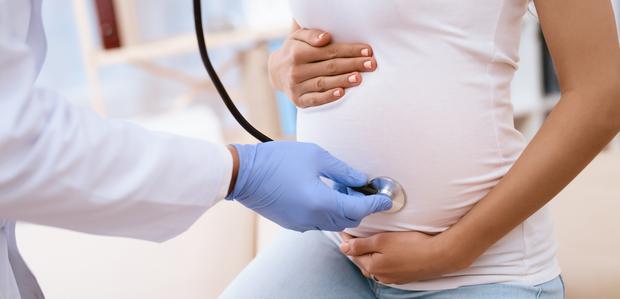Department of Obstetrics and Gynaecology

Women need safe and effective treatment for their problems. We, at Gleneagles Hospital, Lakdi-ka-Pul, ensure that a woman gets cured effectively. Some of the main reasons to choose our Obstetrics and Gynaecology department include:
- Our doctors: We are considered one of the best hospitals for women’s care in Hyderabad because we house only the best obstetricians in Hyderabad. They ensure that their patients get cured of all their ailments and are satisfied with the treatment. They have years of experience and expertise in the women’s care department.
- Infrastructure: Be it pregnancy or any other woman-related problem, our hospitals have some of the best doctors, advanced technology, and well-equipped OTs. Our infrastructure helps us hit the list of the best hospitals to treat Gynaecology issues in Hyderabad.
- Best and Complete Pregnancy Care: Starting from scans, X-rays, pre-delivery care, and delivery to post-pregnancy care, our hospital offers complete care to our pregnant patients. Our hospital is the best hospital for high-risk pregnancies and delivery in Hyderabad, and a woman need not worry.
- Complete treatment: A woman facing Gynaecological issues need not visit several scan centres and labs; we have all the necessary labs and scan machines within our campus. The scan and blood test reports are then analysed by our team of the best Gynaecologists in Hyderabad.
Department of Obstetrics and Gynaecology at Gleneagles Hospital, Lakdi-ka-Pul
Obstetrics and Gynaecology is a department dedicated to the health and treatment of women. The Obstetrics department deals with pre-pregnancy problems, delivery, normal delivery in the hospital, and treating problems post-delivery. Gynaecology deals with all the issues and problems women face throughout their lives.
Women face complications during their pregnancy and delivery period. Utmost care must be taken before, during, and after pregnancy to stay healthy. Hence it is advisable to choose the best hospital for pregnancy and delivery in Hyderabad, to get effective treatment.
Other significant problems women face include uterine fibroids, menstrual disorders, pelvic pain, cervical cancer, cervical dysplasia, etc. These disorders can cause discomfort and pain to women. They are advised to get treated in the best women’s care and normal delivery hospital in Hyderabad as soon as possible.
Gleneagles Hospital, Lakdi-Ka-Pul, Department of Gynaecology is one of the best hospitals for women’s health in Hyderabad and normal delivery in Hyderabad. We house some of the best Gynaecologists in Hyderabad who strive to provide patients with an effective cure. We also offer safe operations and surgery for pregnant women and are considered the best hospital for high-risk pregnancies in Hyderabad. Our infrastructure is another reason why patients prefer to get treated in our hospital. Our well-equipped operation theatres experienced doctors, and excellent infrastructure make us one of the best hospitals, the Department of Obstetrics and Gynaecology in Hyderabad.
Some of the Gynaecology & Obstetric Services we have to include:
Gynaecology
Steps as Follows
- Infertility Treatment: Couples who cannot get pregnant because of some issues can take treatment, become fertile, and expect a child.
- Women's Health Checks: Some of the main check-ups that a woman must undergo frequently include pap smears, cholesterol checks, blood pressure tests, body mass index, glucose tests, and cancer check-ups.
- Laparoscopic Surgeries: In this surgery, a small cut (of about 0.5cm to 1cm) is made on the body. Any issue in the abdomen or pelvis region can be treated through this method.
- Other Uterine Issues like Adenomyosis, Asherman syndrome (intrauterine adhesions), Endometriosis, Uterine fibroids, Uterine polyps, Uterine prolapse, Urinary incontinence, and other women’s issues like Menorrhagia (heavy menstrual bleeding), Menstrual cramps, post-hysterectomy prolapse, etc. are treated at the hospital.
- Menopause issues and post-menopausal bleeding: Any pain during the menstrual time or bleeding after the periods may be a symptom of some major issue. Consult a doctor immediately.
- Ovarian Issues like Ovarian Cysts, Polycystic ovary syndrome (PCOS), Premature ovarian failure, etc.: The ovaries need to be healthy to get periods and stay fertile. Any problem in the ovary must be treated.
- Cervical Issues like Cervical Dysplasia, PAP Smear, etc.: tests and analyses are carried out to detect Cervical Cancer.
- Surgeries like Myomectomy, Minimal Invasive Surgery/Laparoscopic Surgery, Hysterectomy, Colposcopy, etc.: In these surgeries, a small incision is made, and a long tube is inserted with a camera to treat any issue.
Pregnancy & Delivery
Pregnancy and delivery steps are as follows.
- Painless Normal Delivery: In a painless normal delivery, a woman goes into labour and gives birth to a baby naturally without using any external instruments.
- Vaginal Delivery After C-Section: If your first child was born through C-section delivery, the next child's delivery is possible through the vagina directly.
- High-Risk Pregnancy Care: A woman may experience high-risk pregnancy if she has Diabetes, Depression, high blood pressure, or any other major health problem.
- Fertility Clinic: In, a fertility clinic, a couple is helped to become parents. When the natural childbirth process is not possible due to some medical reasons, then take the help of a fertility clinic.
- Instrumental Delivery: The child is delivered through the vaginal track but by using some external instruments like forceps and vacuum.
- LSCS (c-section): A 1-2cm cut is made in the c-section above the uterus, which will aid in childbirth.
- LSCS with Tubectomy: It is a surgical procedure in which the Fallopian Tubes of the woman are sterilised.
- State-of-the-art Birthing Suites: State-of-art birthing suite is a place that has nurses, and 24×7 care is provided to the expecting mother.
- Lactation Counselling: The counselling is done after childbirth. The mother is explained about effective breastfeeding techniques.
- What does Obstetrics and Gynaecology department deal with?
The obstetrics department majorly deals with pre-pregnancy problems, delivery, normal delivery in hospital, and treating other issues post-delivery. In contrast, Gynecology deals with all the issues and problems faced by women throughout their life.
- What services and facilities are available at Gleneagles Global Hospital Lakdi-ka-pul Gynaecology department?
Services and Facilities provided by the best gynaecology hospital in Hyderabad, Gleneagles Global Hospital Lakdi-ka-pul, ranges from
- Paediatric Consultation
- Diet & Nutrition Counselling
- Radiology – Foetal 2D & X-Ray
- Neonatal Intensive Care Unit
- Antenatal & Postnatal Programs
- Mammography
- Lab Services
- Ambulance Services
- Modular OT
- Birthing Suites
- Why is Gleneagles Hospital Lakdi-ka-pul, considered the best Gynaecology hospital in Hyderabad?
Gleneagles Hospital Lakdi-ka-pul is considered one of the best Gynaecology hospitals in Hyderabad for women’s care. They have the best Obstetrician in Hyderabad with years of experience and expertise in women’s care, starting from scans, X-rays, pre-delivery care, and delivery to post-pregnancy care.
FAQ
Why Choose Us
-
PATIENT EXPERIENCE
Your care and comfort are our top priorities. We ensure that the patients are well informed prior to every step we take for their benefit and that their queries are effectively answered.
-
LATEST TECHNOLOGY
The Gleneagles Hospitals' team stays up to date on the advancements in medical procedures and technologies. Experience the Future Healthcare Technologies now at Gleneagles Hospitals.
-
PROVIDING QUALITY CARE
Strengthening lives through compassionate care, innovative therapies and relentless efforts. It reflects in the DNA of our passionate team of doctors and dedicated clinical staff.










